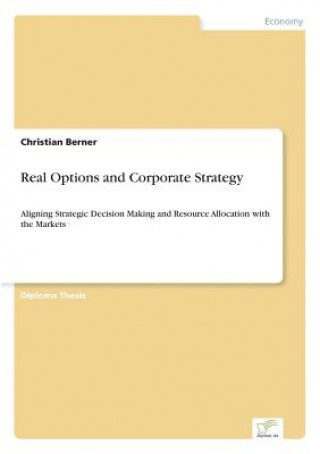
Kód: 08926340
Real Options and Corporate Strategy
Autor Christian Berner
Inhaltsangabe:Abstract: Every investment, for example new facilities, new products, or strategic partnerships is driven by the pursuit of creating żvaluesż. Major changes are going on in the valuation of investments. Although the ... celý popis
- Jazyk:
 Angličtina
Angličtina - Vazba: Brožovaná
- Počet stran: 220
Nakladatelství: Diplom.de, 2000
- Více informací o knize

Mohlo by se vám také líbit
Dárkový poukaz: Radost zaručena
- Darujte poukaz v libovolné hodnotě a my se postaráme o zbytek.
- Poukaz se vztahuje na celou naši nabídku.
- Elektronický poukaz vytisknete z e-mailu a můžete ihned darovat.
- Platnost poukazu je 12 měsíců od data vystavení.
Více informací o knize Real Options and Corporate Strategy
Nákupem získáte 424 bodů
 Anotace knihy
Anotace knihy
Inhaltsangabe:Abstract: Every investment, for example new facilities, new products, or strategic partnerships is driven by the pursuit of creating żvaluesż. Major changes are going on in the valuation of investments. Although the żclassicż shareholder value concept is still a valuable source for identification of value drivers of strategic management, it needs to be extended in terms of its ability to evaluate long-term investment choices. Far too long capital budgeting has only been considered under aspects of its contribution to an overall added economic value rather than focusing on a firmżs resources. Recent research emphasized the strategic value of resources leading to formulate the approach of a żresource-based viewż of a firmżs activities. Usually management tries to capture future development with żstaticż methods of capital budgeting, i.e. future cash-flows are discounted with a fixed risk-adjusted discount rate. However, the finding of present values and capitalized values could produce pitfalls in investment decisions. Strategic investment decisions are often characterized by a wide range of possibilities to react flexibly to the changing business environment. This area of tolerance in investment decisions could not be captured with traditional instruments of investment evaluation. In the 1970s, the discounted-cash-flow analysis (DCF) emerged and proved its practicability. This method assumes a żnowż or żneverż approach in undertaking a project. Some authors suggest adding the theory of option prices to investment decisions, as in the 1970s and the 1980s developments in the valuation of capital-investment opportunities based on option pricing revolutionized capital budgeting. Option pricing allows adaptation and revision of future decisions in order to capture managerial flexibility and to finally capitalize on any possible future development. To incorporate these real options means to limit losses and offers a vital contribution to long-term corporate success, especially in those marketplaces characterized by uncertainty and rapid change. This method also explains the value of waiting for the initial project and considers its value in comparison to the opportunity costs of waiting. These costs are dictated by the behavior of competitors and loss of cash-flow streams from the project. Incorporating this method could possibly lead to a better understanding of the importance of resource allocation, the value of strategic investments and the interdependencies between uncertainty and irreversibility of a project. Through identification of additional value drivers and proper management, the resources are allocated optimally, contributing to the overall goal of formulating a strategy to survive in an uncertain environment. The informational content of option prices and their żforward-lookingż character is an improvement of well used traditional tools in investment decisions and the above mentioned idea of shareholder value as it lays the foundation to evaluate future projects with more accuracy with methods that are approved by financial markets. A growing body of research (see literature) recognizes these values of options. However, this new insight is often separated from creating an overall corporate strategy that leads to more value for companies and their stakeholders. Finally, the option approach to capital budgeting also offers techniques to capture strategic value of technology, interdependencies between related projects and competitive interaction. The important area that badly deserves attention is the area of competition and strategy. The real options potential makes a significant difference in evaluating sustainable competitive advantages resulting from strategic investments such as patent, proprietary technologies, ownership of valuable resources, managerial capital, reputation or brand name, scale and market power. This thesis discusses the real option approach...
 Parametry knihy
Parametry knihy
Zařazení knihy Knihy v angličtině Economics, finance, business & management Business & management Management & management techniques
4243 Kč
- Plný název: Real Options and Corporate Strategy
- Autor: Christian Berner
- Jazyk:
 Angličtina
Angličtina - Vazba: Brožovaná
- Počet stran: 220
- EAN: 9783838621906
- ISBN: 9783838621906
- ID: 08926340
- Nakladatelství: Diplom.de
- Hmotnost: 295 g
- Rozměry: 210 × 148 × 13 mm
- Datum vydání: 29. February 2000
Oblíbené z jiného soudku
-

High Output Management
396 Kč -

Principles
750 Kč -
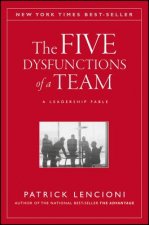
The Five Dysfunctions of a Team
570 Kč -

The Making of a Manager
487 Kč -

Turn The Ship Around!
323 Kč -

Hooked
378 Kč -

Inspired - How to Create Tech Products Customers Love, 2nd Edition
617 Kč -

Give and Take
302 Kč -

Multipliers, Revised and Updated
305 Kč -

Devil Take the Hindmost
421 Kč -

Traction
436 Kč -

The 4-Hour Workweek
629 Kč -

The Daily Stoic
351 Kč -

12 Week Year - Get More Done in 12 Weeks than Others Do in 12 Months
517 Kč -
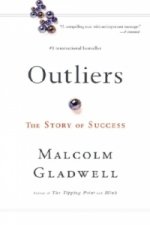
Outliers
257 Kč -

Way, the Enemy, and the Key
1027 Kč -

Leadership BS
791 Kč -

Managing Change in Organizations
817 Kč -

Triggers
302 Kč -
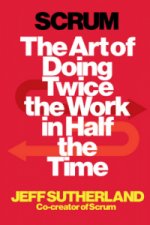
Scrum
302 Kč -

7 Habits of Highly Effective People
477 Kč -

Drive
302 Kč -

New One Minute Manager
302 Kč -

Wooden on Leadership
650 Kč -

Spiral Dynamics - Mastering Values, Leadership and Change
959 Kč -

Leaders Eat Last
356 Kč -

The 7 Habits of Highly Effective People
613 Kč -

How Women Rise
323 Kč -

Dealing with Difficult People (HBR Emotional Intelligence Series)
355 Kč -

Essentialism
378 Kč -

Million Dollar Habits
479 Kč -

Unlimited Memory
420 Kč -

Standard for Portfolio Management
1874 Kč -

Primal Leadership
578 Kč -

Managing Transitions
542 Kč -

I Dare You!
116 Kč -

Executive Coaching with Backbone and Heart - A Systems Approach to Engaging Leaders with Their Challenges 2e
1653 Kč -

27 Challenges Managers Face
693 Kč -

Economist Guide to Financial Management 3rd Edition
558 Kč -

It's Not the How or the What but the Who
777 Kč -

Millionaire Fastlane
579 Kč -

Extreme Ownership
695 Kč -

Leaders Eat Last
323 Kč -

The Coaching Habit
498 Kč -

Professional Product Owner, The
851 Kč -

It's the Manager
832 Kč -
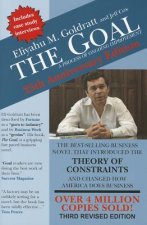
Goal
518 Kč -

Co-Active Coaching
848 Kč -
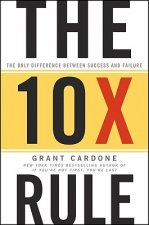
The 10X Rule
570 Kč
Osobní odběr Praha, Brno a 12903 dalších
Copyright ©2008-24 nejlevnejsi-knihy.cz Všechna práva vyhrazenaSoukromíCookies







 Vrácení do měsíce
Vrácení do měsíce 571 999 099 (8-15.30h)
571 999 099 (8-15.30h)